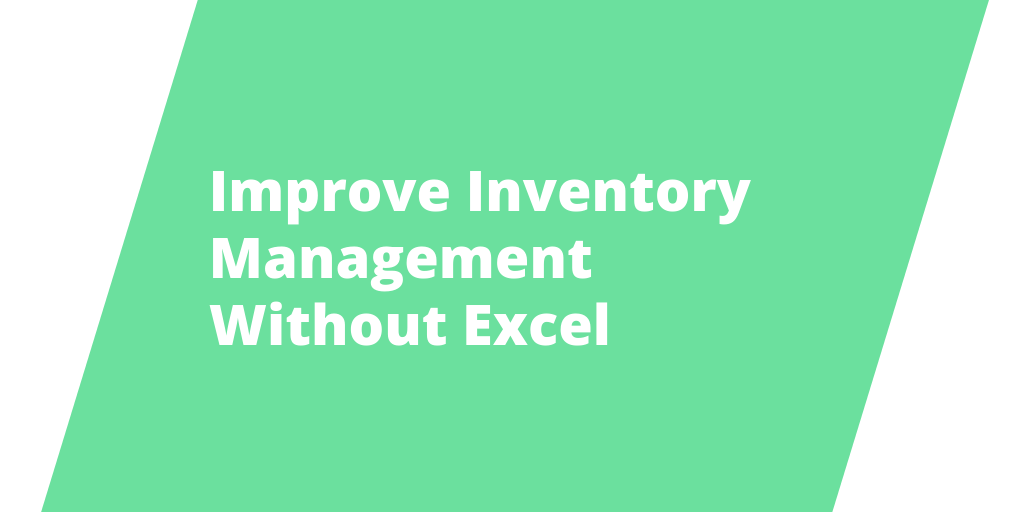Five Reasons Excel Spreadsheets are Damaging Your Scaffolding Business

Most construction firms are experiencing low profitability and margins.
Scaffolding itself can be a business of feast or famine, made especially tough by lingering COVID restrictions, skilled labor shortages, and rising materials prices. But besides these external hurdles, there could be an internal issue that is hurting your company’s profitability.
If your scaffolding business is in a constant battle to protect profit margins, it could be made worse by Excel spreadsheets-specifically, by managing your inventory using Excel spreadsheets.
In this article, we’ll dig into five reasons why Excel spreadsheets are damaging your scaffolding business and provide an alternative inventory management solution you should consider to maximize your return on investment (ROI).
The Problem With Excel Spreadsheets
A recent study showed that 36% of scaffolding contractors rely on Excel spreadsheets to manage their projects. Spreadsheets can be used for tracking inventory and calculating billing, and they’re easy to access since just about everyone has spreadsheet software on their computer. However, many constructors (and people in general) don’t realize the risks that come with it. So, here are 5 reasons why Excel spreadsheets may be harming your scaffolding business.
1) They’re Prone to Inaccuracies.
Spreadsheets are highly susceptible to human error, including incorrect data entry, data corruption, and even total loss of data.
In fact, a study proved that close to 90% of spreadsheets contain errors, with an average of one error for every 20 cells of data. Worse, these errors are hard to locate, especially if your document is dense and unorganized.
This harms your business because it compromises your inventory accuracy. Minor errors like entry inaccuracy or misaligned rows may sound harmless, but add up to major miscalculations down the road. This could lead to last-minute project changes, unnecessary purchases, inaccurate billing, and inefficiencies amounting to millions of dollars worth of losses that could have been easily avoided.
2) They Compromise Security.
Spreadsheets also pose a security risk. Data in Excel is at greater risk for corruption, inconsistencies, mismanagement, or leakage of sensitive information.
Excel spreadsheets are vulnerable due to their lack of security controls. They can be easily shared externally, and anyone can alter formulas, dependencies, or values without being detected. Even password protection leaves data exposed, as it can be easily overridden and it simply prevents new changes from being made.
This increases the risk of fraudulent manipulation by irresponsible individuals, which could lead to tremendous losses for your company. In the past, there have been cases of spreadsheet-based manipulation that added up to a devastating $600M worth of losses.
3) They’re Difficult to Share.
While spreadsheets can be easily shared between two individuals via a quick email or screen share, they can cause miscommunications when shared on an ongoing basis by a team.
As team members send the document back and forth, it’s easy to get the outdated and latest version of the document mixed up. Hence, it’s almost impossible for everyone to observe the same data in real time.
This problem is especially damaging for scaffolding businesses because every project requires clear communication across multiple teams and locations such as staff at the branch yard and crews traveling between job sites. Miscommunications caused by spreadsheets lead to inaccurate planning and unplanned project changes, dragging down your returns.
4) They’re Hard to Integrate.
Besides that, spreadsheets are not very efficient because they cannot integrate with other systems that could aid your scaffolding business, such as accounting or design software. This means that even when you have accurate data, it’s difficult to utilize that data across different tasks and departments within your company.
This increases your project planning and execution time. End users need to perform the time-consuming task of extracting and consolidating data from different departments, summarizing the information, then creating data analysis or visualization. This decreases your business efficiency and affects your overall profit margin as you could be taking on more projects if you had a more effective data management system.
5) They’re Not Auditable.
Scaffolding businesses are essentially asset-based businesses. Unfortunately, Excel spreadsheets are not the best tool to evaluate your assets.
As already mentioned, spreadsheets lack reliability and efficiency. They’re also a static resource with limited transparency into transaction history, which makes evaluating your business assets and finances difficult.
As a result, they can damage your reputation as a company. Will a prospective buyer give you a high valuation for your business if its assets are not tracked in an auditable way? Not likely. It also becomes more challenging to obtain bank loans or otherwise borrow capital at reasonable rates when you can’t prove the value of your fixed assets.
Your Best Solution
While Excel spreadsheets are still widely used in the construction industry, they could be harming your business or hiding the insights that would otherwise help you boost profits and scale your operations. To maintain or increase your business profitability, consider adopting a better inventory management system. There are many alternatives out there, but here are key features to look out for:
- Complete inventory control that helps track equipment, orders, backorders, and re-rents accurately
- Provides real-time data of all information in one program
- Scaffold-specific software that tracks jobs and materials across different locations
- Seamless integration with other software
Unlock these features and more with Avontus Quantify®. It’s the one-stop inventory management software built specifically for scaffolding businesses. Monitor inventory, generate estimates, ship materials, automate invoices, and manage re-rentals with just one powerful program.